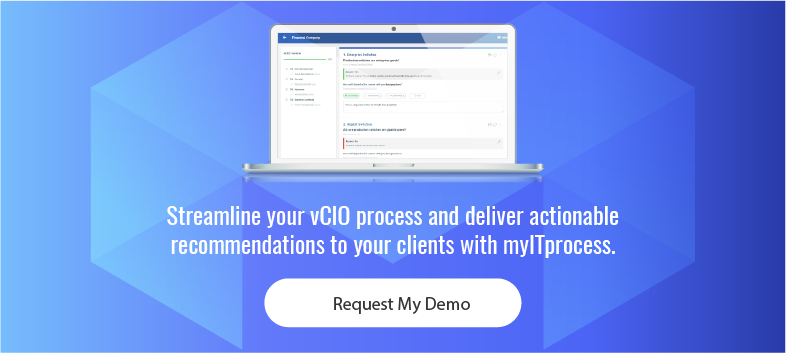You’ve decided it’s time to become a Technology Success Provider (TSP), but you’re not sure where to begin — that’s okay. I’ll walk you through the initial steps. Be sure to always keep the following in the back of your mind: Your clients today need advice on how to navigate a more complex and technical environment. That’s where you come in as a TSP, and that’s where you as a business owner profit.
1. Focus on business results
Take a look at your business and take inventory of all your services. Do they focus primarily on technology? If so, look for ways to enhance your offerings. Also, remember to be proactive instead of reactive with your clients. Don’t wait for something bad to happen; help your clients prepare ahead of time. Show how technology can impact their overall business.
The relationship between you and your customers should be based on business value, which, I know, can be difficult to navigate at first — but making this shift in your business will be worth it. TSPs develop processes dedicated to helping customers understand the business impact of technology. It’s that simple! This realignment of values marks the first step in becoming a TSP.
2. Uncover technical risk
Find technical risk or pain before it finds you. The process of uncovering technical risk (also known as technical alignment) and the business impact of misalignments needs to be established. This action must be repeatable and yield results for every customer you have. You need to have resources solely dedicated to this process. Once this has been established, you’ll be able to show customers how you can attach value.
Ultimately, this process should make it clear to customers why they should buy from you and potentially pay more for your services. This process creates separation in the sales process between your offering and other alternatives.
3. Reduce reactive time
As I mentioned earlier, a TSP reduces reactive time (or lowers reactive noise). What do I mean by this? Well, let’s take a look. Support costs fall into the reactive bucket. Measure your support costs (be sure to take into account all tickets and alerts included in your monthly fee) relative to top providers. Where do top providers stand when it comes to support costs?
After you benchmark yourself, you can begin to measure and set goals for items such as tickets per month per end user and average resolution time. Now you’ve got your baseline established. Use it to focus on developing roles and process aimed at reducing reactive time within your business model. Our framework at TruMethods does just that — let me explain part of it.
At the center of our framework are two roles dedicated to Technology Success: Technology Alignment Manager and Technology Consultant (vCIO). The former reviews customer technical environment to your standards every month. Many of the tickets and alerts providers deal with are the result of technology and configuration misalignments over time. Once the alignment reviews are complete, the vCIO then reviews the business impact of misalignments with the customer. They also develop a technical roadmap (which includes an IT budget).
Shifting your entire business to the TSP model doesn’t happen overnight, but what you can change almost immediately is your mindset. If you are interested in changing your business to fit this model for success, schedule a demo for our myITprocess software today!


